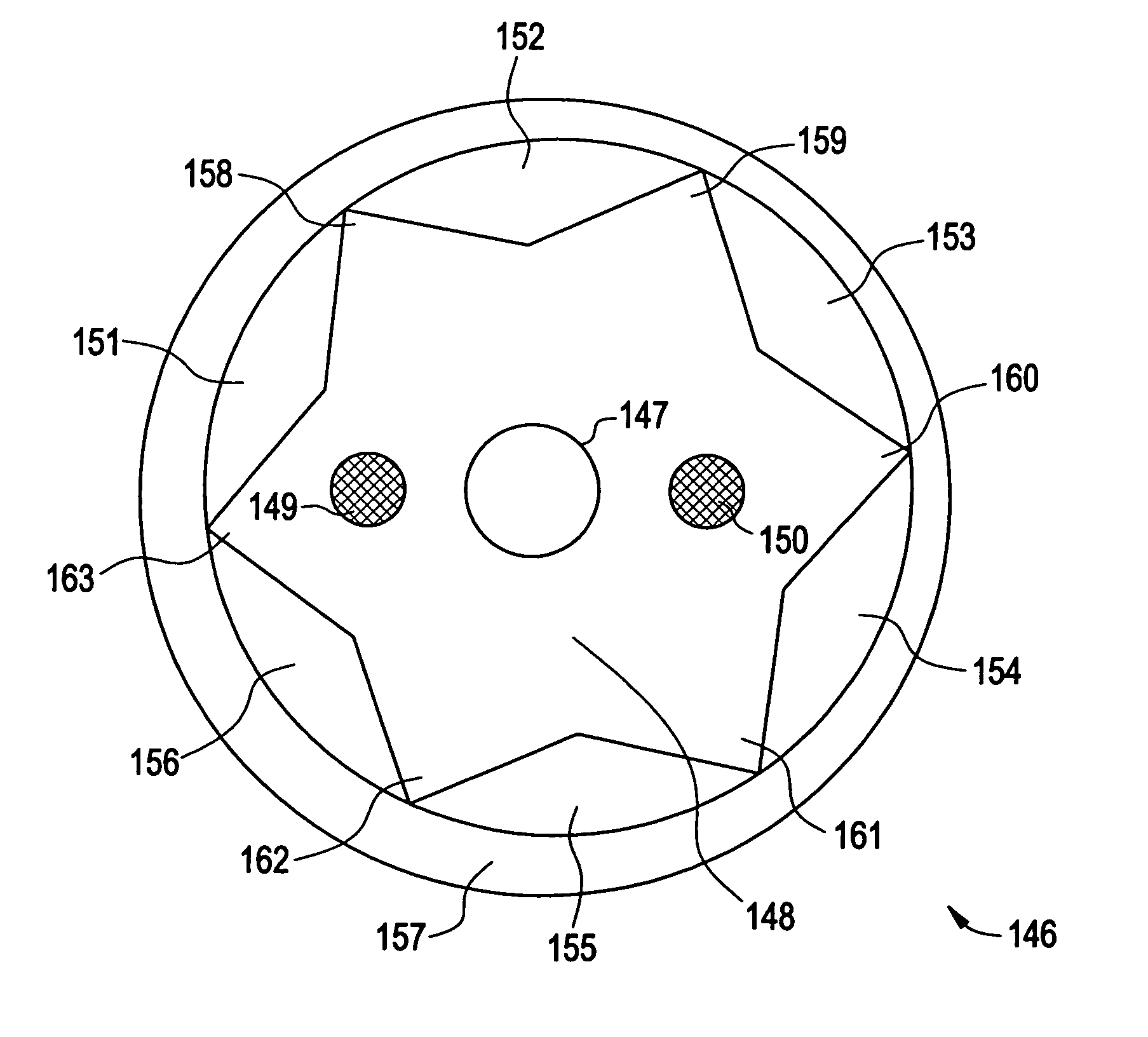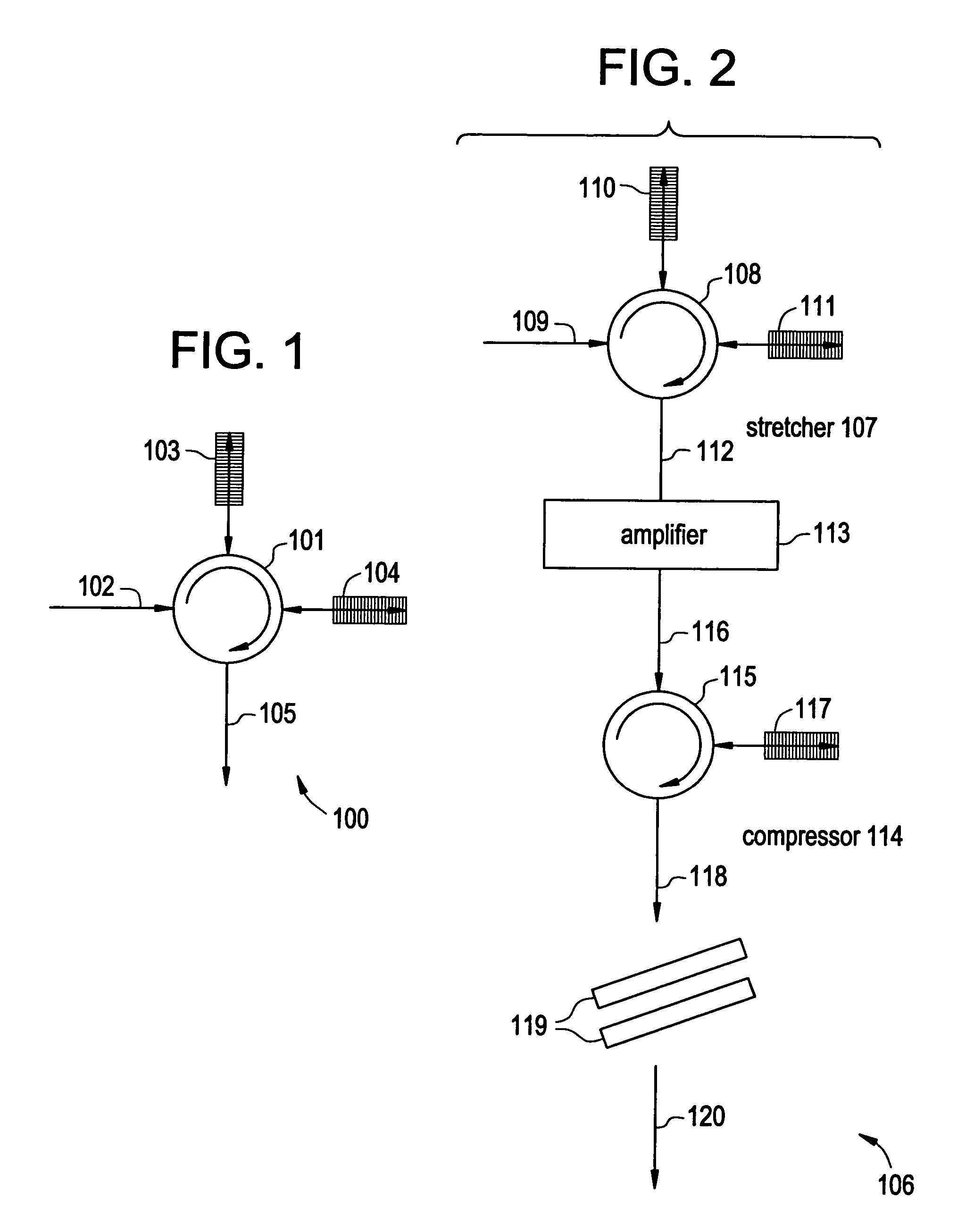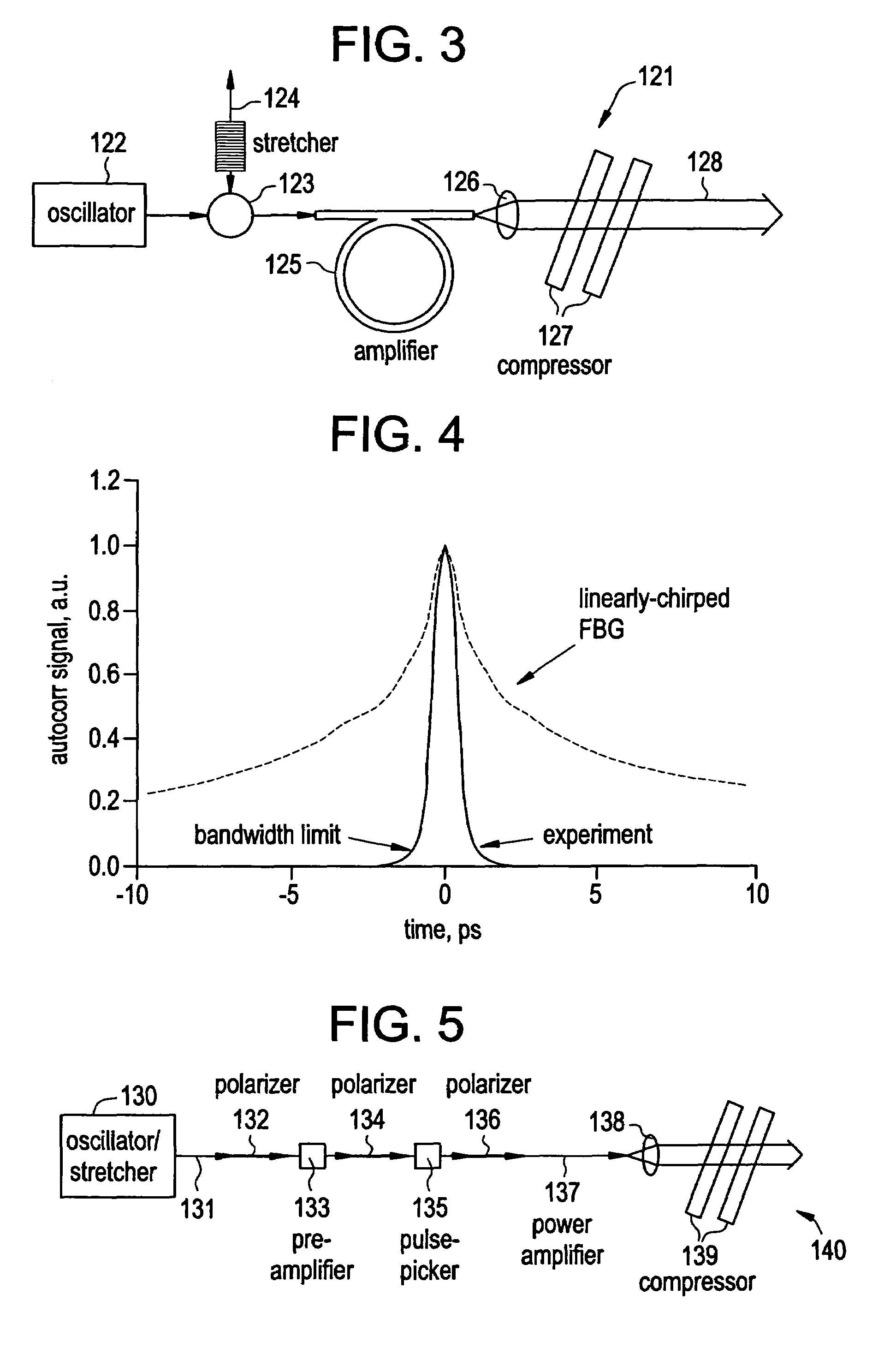In-line, high energy fiber chirped pulse amplification system
a high energy fiber and chirped pulse technology, applied in the field of high energy fiber laser pulse source construction, can solve the problems of difficult alignment of bulk stretchers and compressors, difficulty in making such single-mode amplifiers, etc., and achieve the effect of optimizing the spectral output of these amplifiers, accurate control, and high average power
- Summary
- Abstract
- Description
- Claims
- Application Information
AI Technical Summary
Benefits of technology
Problems solved by technology
Method used
Image
Examples
working example 1
[0049]In a system demonstration, pulses with a full width half maximum (FWHM) width of 350 fs from a passively modelocked Er fiber oscillator operating at a repetition rate of 50 MHz were stretched in a 10 cm long nonlinearly chirped fiber Bragg grating to a width of 700 ps. The nonlinearly chirped fiber grating was designed (e.g., by the iterative method) to provide the same dispersion as the bulk grating compressor; the bulk grating here having a groove spacing of 1200 lines / mm and operated at the Littrow angle. The maximum group delay variations (or group delay ripple) from the designed group delay in the chirped fiber Bragg grating were measured at ±<2 ps. The oscillator pulse energy was 100 pJ. After amplification by a factor of 10, the pulses were recompressed in the bulk grating compressor. The recompressed pulses had a FWHM width of ≈700 fs sitting on an additional pedestal with a FWHM width of 3 ps, containing about 2% of the pulse energy. Hence a compression ratio of up to...
PUM
 Login to View More
Login to View More Abstract
Description
Claims
Application Information
 Login to View More
Login to View More - R&D
- Intellectual Property
- Life Sciences
- Materials
- Tech Scout
- Unparalleled Data Quality
- Higher Quality Content
- 60% Fewer Hallucinations
Browse by: Latest US Patents, China's latest patents, Technical Efficacy Thesaurus, Application Domain, Technology Topic, Popular Technical Reports.
© 2025 PatSnap. All rights reserved.Legal|Privacy policy|Modern Slavery Act Transparency Statement|Sitemap|About US| Contact US: help@patsnap.com



